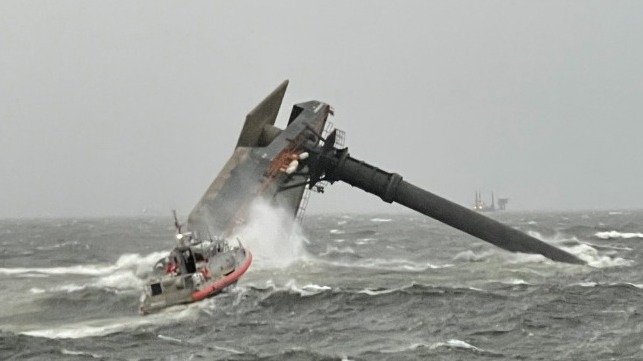Coast Guard Weather Warning System Offline When Seacor Power Was Lost

The Coast Guard hearing into the loss of the Seacor Power entered its second week with the revelation that a critical warning system operated by the Coast Guard was not functioning on the day of the accident. The captain and crew of the Seacor Power were apparently unaware that the system was not working as they headed into the Gulf of Mexico expecting if the weather situation deteriorated that they would receive alerts.
The hearing on Monday, August 9, focused on the weather conditions on April 13, the day the Seacor Power was lost taking the lives of 13 of the 19 crew members and contractors aboard the liftboat. The vessel departed Port Fourchon at mid-day, heading to the Talos Energy platform 40 miles east of Venice, Louisiana. The weather updates the captain received that morning said that 10 to 15 mile per hour winds were expected with two-to-four-foot seas, a normal operating condition for the liftboat.
Testimony from the National Weather Service reported that they updated the weather reports several times at mid-day and the afternoon as a line of thunderstorms followed by a low-pressure system approached and moved south across Louisiana and out into the Gulf of Mexico. National Weather Service forecaster Philip Grigsby told the panel that they had updated the forecast again at 2:30 p.m. issuing a marine warning for winds to exceed 39 mph. Ultimately winds as high as 80 mph hit the Seacor Power followed by a low with sustained winds until the following morning clocked between 30 and 50 mph.
While these weather conditions exceeded the ratings for the vessel, the captain was unaware because earlier that day the US Coast Guard had discovered that its Global Maritime Distress and Safety System was not transmitting.
According to Commander Vince Taylor, commanding officer for the Coast Guard Communications Command, they had identified a problem at 10:00 a.m. than morning and the system would not be restored until after the Seacor Power had heeled over. He told the panel the problem was a connectivity issue.
Survivors from the Seacor Power described how the vessel was hit by the winds and the captain’s attempt to lower the legs of the vessel to stabilize it. They had noticed a problem with the alert system, but one person on the bridge thought it might have just needed paper. When asked by the hearing officers, the commander said that the vessel’s owners and operators onshore however could have been aware of the National Weather Service alerts.
The hearings are scheduled to continue all week ending on August 13. During the first week, among the issues they explored were the operating conditions of the vessel and the events leading up to the loss. Rescue teams described the harrowing events arriving on the scene and ultimately saving six crew members despite the weather conditions.
The U.S. Coast Guard is conducting a full investigation into the loss of the Seacor Power. Separately, the National Transportation Safety Board is also investigating the accident.
